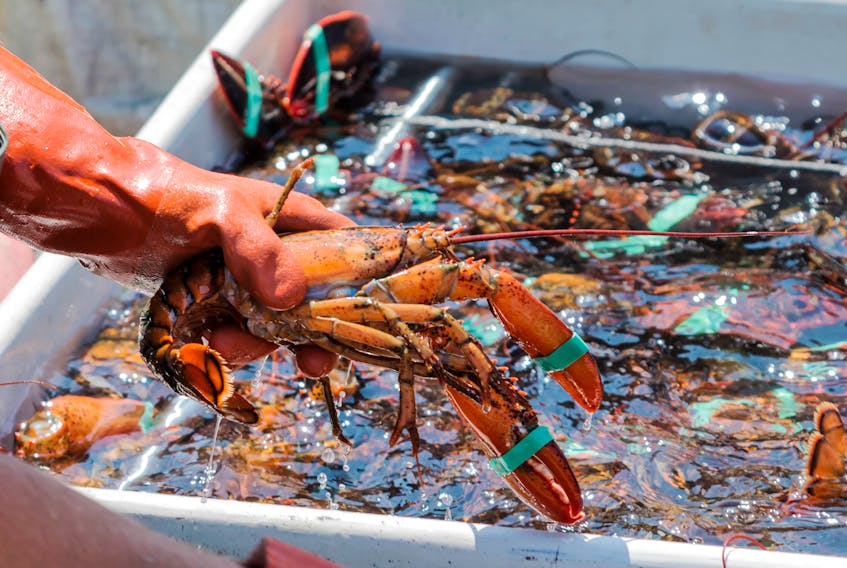SOUTH WEST NOVA SCOTIA - Shore prices were record-setting for the opening week of the commercial lobster fishery in southwestern Nova Scotia, going from $6 to $6.25 per pound on the first landing day (Dec. 2) to $8 by Friday (Dec. 7), but on the bad side the prices were driven by an estimated 30 to 40 per cent decrease in lobster landings compared to the same timeframe last year.
“The price is phenomenal,” said Lockeport buyer Mike Cotter, owner of Cotter’s Ocean Products Inc. “It’s unreal. It opened at $6, $6.25 and now today it’s $8. That’s a big price.”
There’s not a lot of product being shipped, said Cotter.
“The guys (buyers and dealers) that want to put lobsters away for the winter are being pretty fierce. They want them to put them away in December so that caused the price to go crazy,” he said.
Cotter estimated that in Lobster Fishing Area (LFA) 33, which stretches from Baccaro Point in Shelburne County to Eastern Shore, Halifax County, the catch is down about 30 per cent while in LFA 34 (from Baccaro to Burns Point, Digby County), landings were down by as much as 40 per cent.
Sea conditions that delayed the start of the season by five days, along with cold water temperatures, are factors impacting the catch, said Cotter.
“From the first day the boys set their gear we’re down 10 degrees in water temperature,” he said, adding two weeks of storms before the season started “stirred everything up” and didn’t help matters.
Cotter said while the catch hasn’t been record-setting, it does seem stable.
“We’re going into the sixth day of landings and the catch has stabled off some,” he said last week. “Normally it just keeps dropping and dropping and dropping, but it seems to be holding pretty good, which is unusual after six or seven days of fishing. It’s staying stable so that’s good.”
Cotter said it’s too early to tell if there is going to be a market supply problem.
“Next week is really going to tell what takes place. We have another four or five days of good weather coming so the boats are going to fish another four of five days,” he said, which should give a better indication of what the quality is like and what the price will do.
“It’s been a different start,” he said.
Leo Muise, executive director of the Nova Scotia Seafood Alliance, said from talking with his members it appears the quality of the catch for the first week of the season seemed to be an improvement over recent years.
Muise said it’s “too soon to conclude” if the supply will be a season-long problem.
“Another week will give us a better picture of what is going on,” he said. “(This) week will tell a lot. The export market is strong and if the reduction in landings is long term it will affect everyone, both on the water and on land.”
According to the latest statistics from the federal Department of Fisheries and Oceans, LFA 33 and 34 licence holders recorded landings of 31,863 tonnes (preliminary) in 2017/18, generating a landed value of approximately $502 million (preliminary). It is expected to be confirmed as the second largest landed value on record.
In 2017/18, 60 per cent of the total inshore lobster landings in the Maritime region were from LFAs 33 and 34.
Meanwhile, at an announcement that took place in Yarmouth last week concerning updated regulations for the Fisheries and Aquaculture Loan Board to make it easier for younger fishermen and new entrants into the fishery to access financing, loan board chair Denny Morrow suggested something that ought to be explored is the impact of climate change on the fishery.
“One of the things that the industry and government is going to have to deal with is climate change. We need investments in science to monitor what is happening,” he said. “Last summer we had temperatures around the province about four degrees above normal. And the fishermen are telling me out on the water right now that the temperatures are low, that they dropped suddenly. How that is going to affect the fishery, not just lobsters but the entire fishery, I think it’s very important to look at.”









